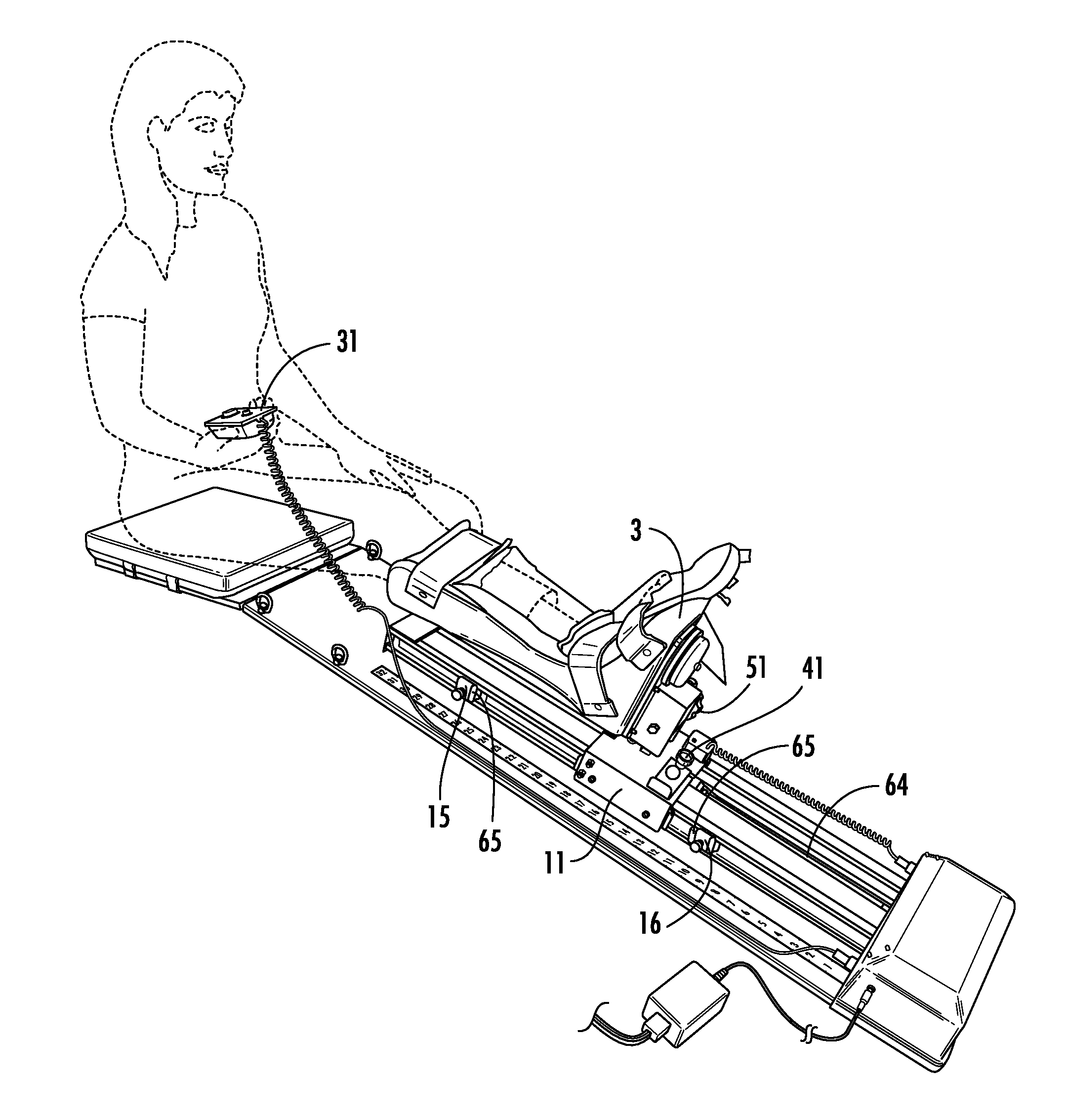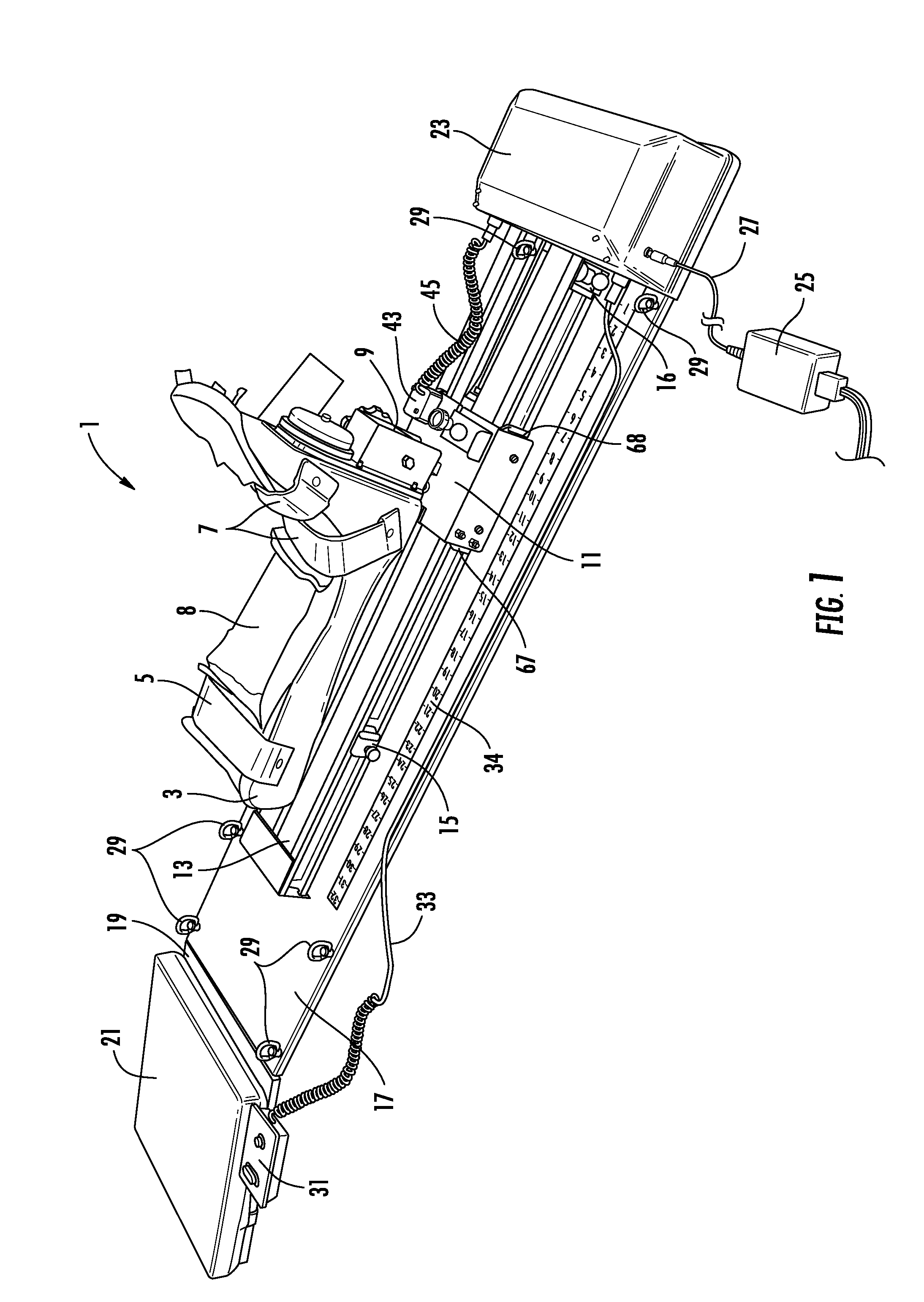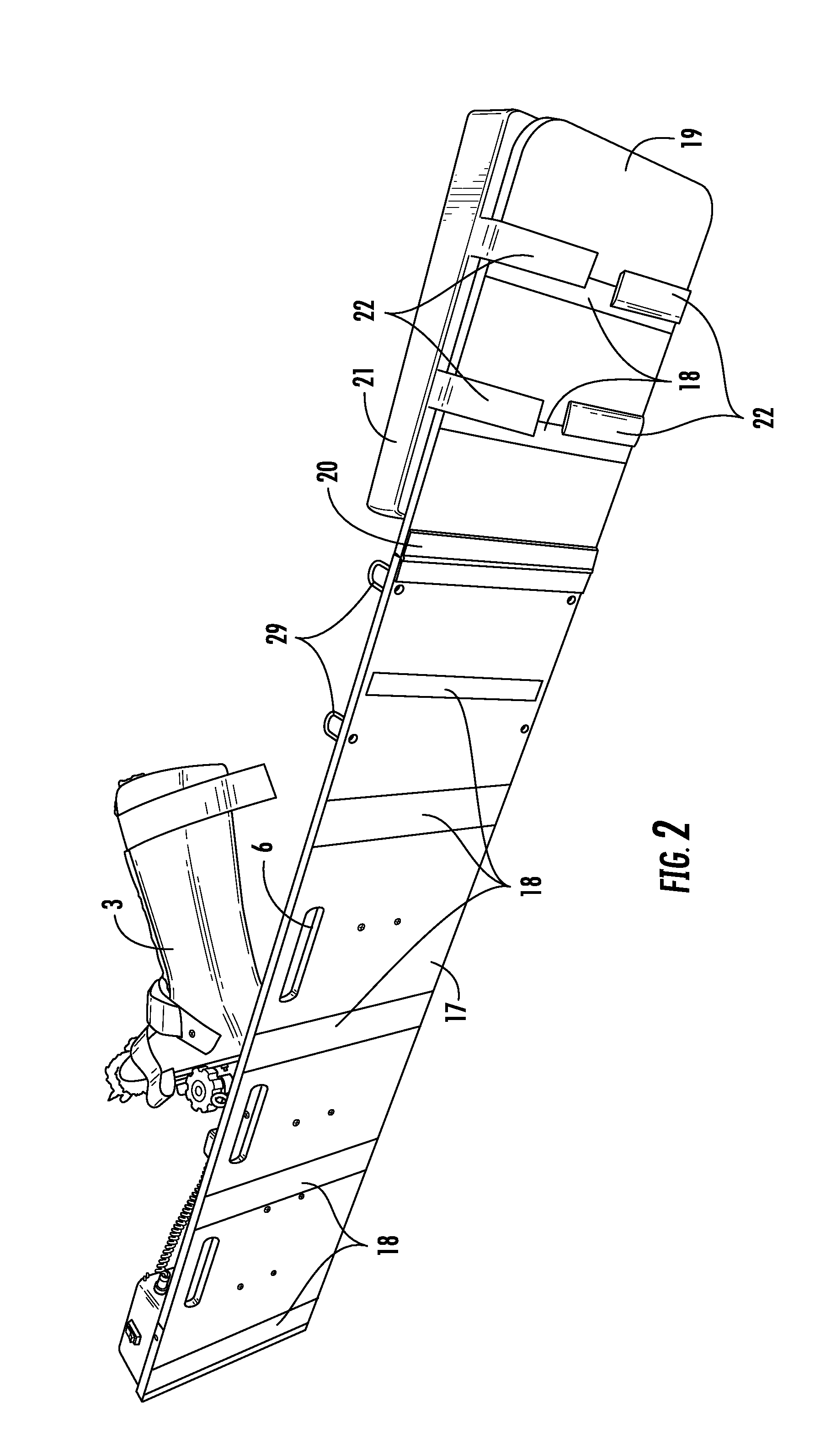Orthosis Machine
a technology of orthosis machine and apparatus, which is applied in the field of orthosis machine apparatus and methods, can solve the problems of inability to provide additional rehabilitation options for patients who have undergone injury or surgical intervention, patients who have undergone surgery often have damaged proprioceptive abilities and/or joint acuity loss, and conventional cpm's generally lack progressive rehabilitation options
- Summary
- Abstract
- Description
- Claims
- Application Information
AI Technical Summary
Benefits of technology
Problems solved by technology
Method used
Image
Examples
Embodiment Construction
[0034]The following detailed description is of the best currently contemplated modes of carrying out exemplary embodiments of the invention. The description is not to be taken in an unduly limiting sense, but is made merely for the purpose of illustrating the general principles of the invention, since the scope of the invention is defined by the appended claims.
[0035]Various inventive features are described below that may each be used independently of one another or in combination with other features. It should be understood that the invention may assume various alternative variations and / or sequences, except where expressly specified to the contrary. It should be understood that the term “orthosis machine” when referring to embodiments of the claimed invention refers to a device that can be used generally as an CPM machine but that also may have enhanced functions including other modes of rehabilitation / exercise as described further herein.
[0036]For purposes of the description here...
PUM
 Login to View More
Login to View More Abstract
Description
Claims
Application Information
 Login to View More
Login to View More - R&D
- Intellectual Property
- Life Sciences
- Materials
- Tech Scout
- Unparalleled Data Quality
- Higher Quality Content
- 60% Fewer Hallucinations
Browse by: Latest US Patents, China's latest patents, Technical Efficacy Thesaurus, Application Domain, Technology Topic, Popular Technical Reports.
© 2025 PatSnap. All rights reserved.Legal|Privacy policy|Modern Slavery Act Transparency Statement|Sitemap|About US| Contact US: help@patsnap.com



